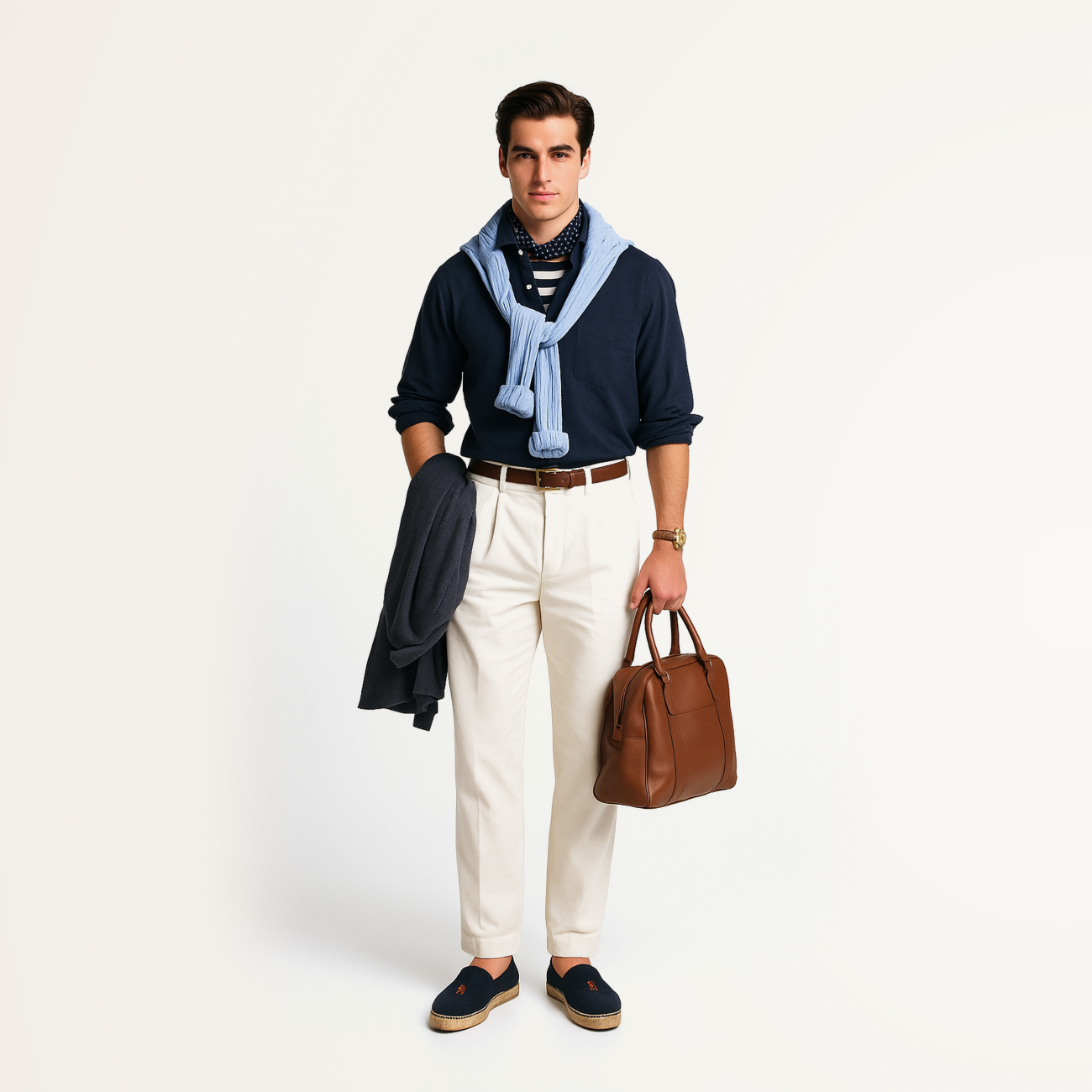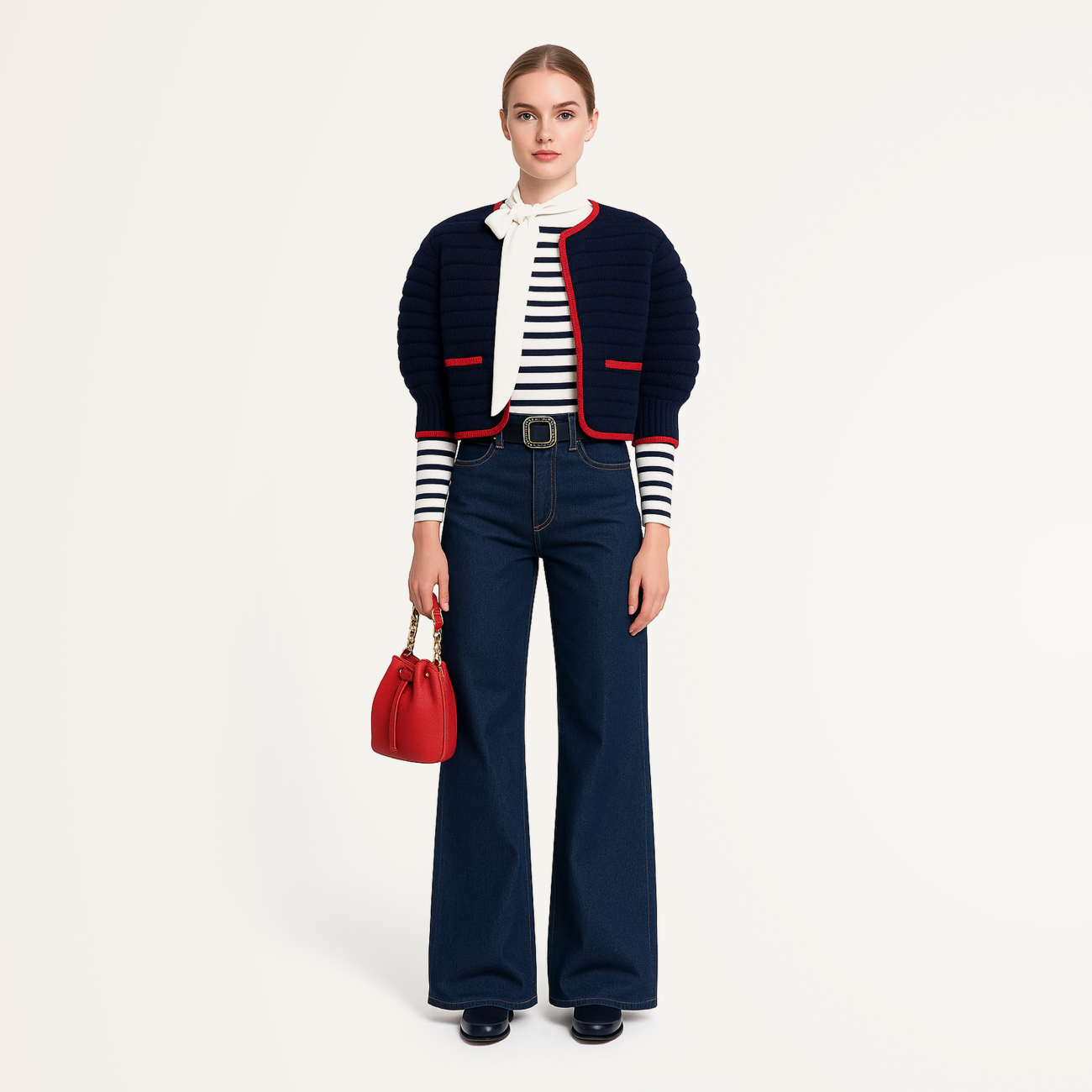Nautical
Nautical Style is an elegant reflection of the spirit of freedom, the romance of travel, and a deep connection with nature. It evokes the scent of fresh sea air, the vastness of open waters, and the strength of waves that symbolize serenity and liberation. At its core, this style blends classic simplicity with refined ease, expressing a desire for harmony between human and environment. Nautical style embodies not only a love for the sea, but also a thirst for adventure, joy, and lightness — making it a timeless and universally appealing aesthetic.
History
The history of nautical style is deeply rooted in maritime culture and can be traced back to the 19th century. Initially, the elements of this style were created not for aesthetics, but for practical reasons: sailors’ clothing had to be durable, functional, and highly visible against the backdrop of a stormy ocean. Over time, however, naval uniforms evolved into symbols of freedom, adventure, and romance.
One of the first visual symbols associated with nautical style was the stripe, which appeared in 1858 in the uniform of French sailors. The stripe, known as the Breton stripe, featured 21 lines said to represent Napoleon’s victories. It wasn’t just part of the uniform — it also had a practical purpose: the contrasting pattern made it easier to spot a sailor who had fallen overboard.
In England, naval uniforms were marked by elegance and strictness. Over time, military naval attire became not only a uniform for sailors but also a symbol of prestige. The deep navy blue, associated with the sea, and gold buttons became iconic details of British naval officers’ uniforms.
A true turning point for nautical style came in the early 20th century, thanks to Gabrielle \
Signature elements of the style
Color palette
At the core of nautical style are three classic colors: white, navy blue, and red, sometimes accented with gold and yellow to symbolize lighthouse beacons. Light blue, beige, and grey are also frequently used, adding a sense of natural freshness to the maritime palette.
Prints
The signature print of nautical style is the horizontal stripe. Stripe width varies from thin to wide, creating different visual effects. Less commonly, you’ll find prints of anchors, compasses, and other maritime symbols, adding a touch of romance and vintage charm.
Textures
Fabrics in nautical style feature natural textures. Cotton, linen, and knitwear are widely used to highlight comfort and practicality. For autumn and winter, wool and cashmere are added to bring a sense of warmth and coziness — reminiscent of staying snug on a ship during stormy weather.
Cuts & silhouette
Simplicity and functionality remain the foundation. Nautical style includes straight lines and loose, slightly oversized silhouettes designed for comfort and ease of movement. Parka jackets, double-breasted blazers with metallic buttons, wide-leg trousers, and full circle skirts underscore the effortless elegance of maritime aesthetics.
Wardrobe essentials
- Breton Stripe Shirt — the timeless symbol of nautical style.
- Double-Breasted Blazer with Gold Buttons — inspired by naval uniforms, it adds a sense of structured elegance to the look.
- Wide-Leg Trousers — typically in white or navy, reminiscent of sailor uniforms but with a modern cut.
- Canvas or Leather Bags — practical yet stylish, evoking the spirit of travel and the sea.
- Footwear — loafers, moccasins, and espadrilles are staples. Canvas options are popular in summer, while leather boots are perfect for cooler months.
Substyles
Email: support@belt-app.com


















